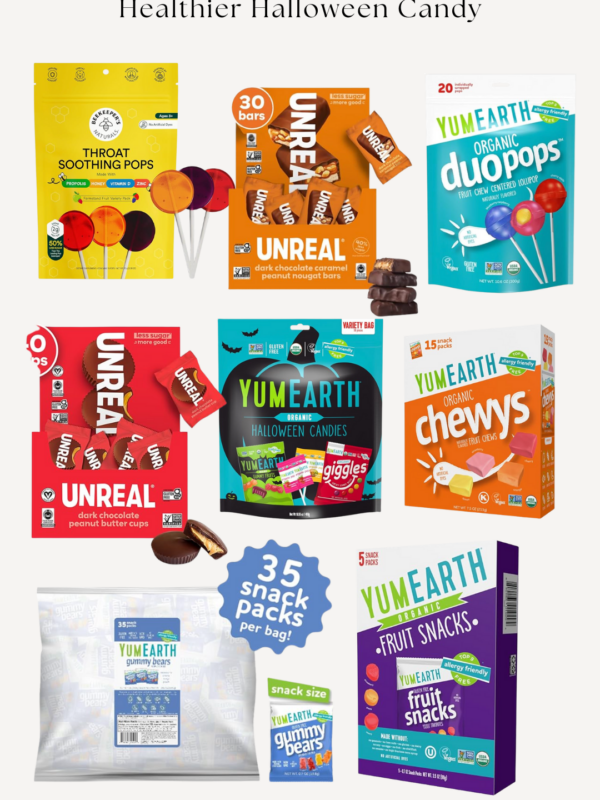
If you caught the recent CDC headline reporting that one in three teens in the U.S. has prediabetes, you’re not alone in doing a double take. It’s a stat that’s honestly both alarming and motivating—especially if you’re a parent, health professional, or someone trying to raise kids with strong, lifelong habits.
So what does this actually mean? And what can we do about it?
Let’s break down the latest research and what it means for your family.
Let Me Back Up for a Second—What Is Diabetes?
Before we talk about prediabetes, it helps to understand what diabetes actually is—because there’s a lot of confusion around it.
Type 1 diabetes is an autoimmune condition where the body mistakenly attacks the insulin-producing cells in the pancreas. It usually shows up in childhood or adolescence, and it’s not caused by diet or lifestyle. People with type 1 need daily insulin to survive.
Type 2 diabetes is the one we’re seeing more and more in teens. It develops when the body doesn’t use insulin properly (a.k.a. insulin resistance) or stops producing enough of it. Over time, blood sugar builds up in the bloodstream and starts to damage organs, nerves, and blood vessels. And the scariest part? You can have it for years without even knowing.
Once diagnosed, type 2 diabetes doesn’t go away—and if it’s not managed well, it can lead to heart disease, kidney problems, vision loss, and more.
So when we say “prediabetes,” we’re talking about the early warning sign that your body is struggling with blood sugar, and it’s on a fast track toward type 2 diabetes—unless you step in and change course. And it’s 100% necessary as we’re seeing more cases of prediabetes in teens than ever before.
What Is Prediabetes?
Prediabetes is a metabolic condition where blood sugar levels are higher than normal but not yet high enough to be diagnosed as type 2 diabetes. The CDC calls it a “critical warning sign” for a reason: without action, prediabetes often progresses to full-blown diabetes, along with increased risk for heart disease, stroke, and cognitive issues later in life.
According to the CDC’s 2023 data, about 8.4 million adolescents aged 12 to 17—or 32.7% of U.S. teens—had prediabetes. That’s one in three teens, and most of them had no idea.
Source: CDC, 2023 – Prediabetes and Children
Why Are So Many Teens Affected?
There’s no single cause—but there are several common threads. Most of them come down to lifestyle and environment.
High-sugar, ultra-processed diets.
Teens are consuming more added sugar than ever before—especially through soda, energy drinks, sweetened coffee, and packaged snacks. These spike insulin repeatedly, which over time, can lead to insulin resistance.
Low physical activity.
Only about one in four teens gets the recommended 60 minutes of physical activity per day. Movement helps the body process glucose properly. Without it, blood sugar control gets harder.
Sleep issues.
Most teens don’t get enough sleep. Less sleep = more stress hormones + reduced insulin sensitivity. It’s a double whammy.
Puberty and hormones.
Insulin resistance naturally increases during puberty, even in healthy-weight kids. When that’s combined with poor diet or lack of activity, the risk for prediabetes jumps.
Genetics.
Family history plays a role, too. Teens with a parent or sibling with diabetes are at higher risk, even with a relatively healthy lifestyle.
Source: NIH – “Insulin Resistance and Puberty”
Why It Matters (Even If They Feel Fine)
Here’s the tricky thing: prediabetes doesn’t usually cause symptoms. It’s easy to ignore because there’s nothing obvious going on—until something is.
If prediabetes isn’t addressed, it often progresses to type 2 diabetes in just a few years. And once that happens, the risks get much more serious. We’re talking long-term damage to the heart, kidneys, nerves, and more.
Recent research from JAMA Pediatrics also found that teens with unmanaged prediabetes were more likely to experience cognitive decline by midlife—meaning these blood sugar issues can have real brain effects decades down the road.
Source: JAMA Pediatrics, “Prediabetes in Youth: Nearly 1 in 5 Adolescents Affected
Are There Any Signs to Watch For?
A lot of cases of prediabetes in teens can fly under the radar, but in some cases, there are subtle signs that something’s off with blood sugar regulation. These might not seem serious at first—but over time, they can point to underlying insulin resistance.
Here are a few symptoms or patterns that might show up in teens:
- Increased thirst or hunger
- Fatigue or low energy, especially after meals
- Frequent urination
- Darkened patches of skin (often around the neck, armpits, or elbows—this is called acanthosis nigricans)
- Mood swings, brain fog, or trouble focusing
- Weight gain, especially around the midsection
- Cravings for sugar or carbs
- Difficulty losing weight despite healthy habits
If you’re noticing a few of these signs—or if your teen has risk factors like a family history of diabetes, low physical activity, or a diet high in added sugars—it’s worth asking your pediatrician about screening with a fasting blood glucose or A1C test. Catching it early makes all the difference!
How to Reverse Prediabetes in Teens
Here’s the good news: prediabetes is often totally reversible, especially when it’s caught early. And no, it doesn’t take a complete life overhaul—just small, consistent changes that support blood sugar balance and metabolic health.
Here’s what I recommend, both as a dietitian and a mom who’s all about simple, sustainable habits:
1. Build meals that balance blood sugar.
This is one of the biggest game-changers. Aim for every meal (and snack!) to include protein, fiber, and healthy fat—those three work together to slow digestion, minimize blood sugar spikes, and keep energy and focus steady throughout the day.
If you’ve followed my Rachael’s Good Eats cookbook or any of my recipes, you already know I’m all about leading with protein. Yes, I still eat carbs—I’m not anti-carb—but I always pair them with protein and fat to support blood sugar balance. For starches, I typically reach for whole-food options like potatoes or rice.
Some simple, teen-friendly combos:
- Eggs with sourdough and avocado
- Chicken tacos with slaw and guac
- Smoothies made with frozen fruit (never fruit juice), a clean protein powder, and a spoonful of unsweetened nut butter—try to keep fruit to about 1 cup or less
It doesn’t have to be perfect. It just has to be balanced.
2. Cut way back on added sugar.
This one’s huge. And if you know me, you know this is kind of my bread and butter. I’ve been talking about added sugar for years—and helping thousands of people make realistic, lasting changes that actually feel doable.
Do you have to go completely sugar-free forever? Definitely not. That’s not the goal. But pulling added sugar out of the daily routine—especially from the hidden sources—can have a massive impact on blood sugar, cravings, and insulin sensitivity.

If you’re trying to make a change with your kids, it has to start with the whole household—and with you. That’s something I talk about a lot in my 7-Day Added Sugar Detox. It’s one of my proudest programs because I’ve seen the shift it can create in just a week. Tens of thousands of people have used it to reset their habits, stabilize blood sugar, and feel more in control around food.
The guide includes:
- 35 dietitian-developed recipes (breakfast, lunch, dinner, snacks, dessert)
- My personal tips, tools, and mindset shifts
- Advice for eating out, reading labels, and living beyond the 7 days
- Step-by-step support to make it stick
If you’re ready to take that first step, click here to learn more and get the guide.
Start with drinks.
This is where so much of the hidden sugar sneaks in—sodas, sports drinks, energy drinks, even those “healthy” bottled teas and coffees.
Better swaps we love in our house:
- Filtered or sparkling water (Spindrift is my go-to)
- Coconut water with no added sugar (I like Harmless Harvest). Keep in mind, it still has sugar, so be mindful
- LMNT or other no-sugar electrolytes
I go deep into all of this in the detox, but one of the most important tips is this: read your labels. Added sugar shows up in the most unexpected places.
3. Encourage movement—but keep it fun.
You don’t need to drag your teen to the gym or force a structured workout schedule. The goal is simply to get them moving more often, in ways they actually enjoy—and that starts with lowering the pressure and upping the fun!
Here are a few easy ideas that work for teens (and honestly, the whole family):

- Take a walk together after dinner
- Shoot hoops in the driveway or toss a ball around
- Do a few bodyweight or banded strength moves at home (you already know I love a Rec Sweat resistance band moment—code RACHAEL15 gets you 15% off sitewide)
The key is consistency over intensity. Daily movement helps muscles absorb glucose more effectively, lowers insulin resistance, and supports better energy, sleep, and focus. And when it feels good—not like a punishment—they’re way more likely to stick with it (aren’t we all).
4. Protect their sleep like it’s their superpower.
Sleep might not sound like a blood sugar strategy—but it 100% is! When you don’t get enough sleep, cortisol (your stress hormone) goes up, insulin sensitivity goes down, and everything from appetite to mood gets thrown off.
And if I’m remembering correctly back to my teens, I slept in until 11 a.m. on weekends in high school like it was my job. But most teens today are staying up late, on their phones, overstimulated, and running on way less than they need. It’s no surprise their blood sugar is struggling and leading to prediabetes in teens.
Here are a few things that can help:
- Power down screens 60–90 minutes before bed (blue light messes with melatonin). Try these blue light blocking glasses. We use them most nights when we’re watching TV or on our computers.
- Keep their room cool and dark—aim for 60–67°F—and try to maintain a consistent sleep-wake schedule. If your teen sleeps in a little on weekends, that’s okay—just aim to keep it within an hour or two of their usual wake-up time. That way, they’re still getting rest without totally resetting their body clock by Monday. Linking these blackout curtains.
- Switch lamps and overhead lights to amber bulbs. Many people love using amber night-light bulbs in bedrooms and bathrooms after sunset to create a cozy, melatonin-friendly environment. Unlike blue or bright white lights, amber light doesn’t suppress melatonin—the hormone that helps you fall asleep—making it a smart swap for teens who are sensitive to late-night light exposure. (Yes, there’s science behind this—multiple studies have shown amber light supports better sleep by protecting the body’s natural circadian rhythm.)
If your teen can start getting even just 8 hours of sleep most nights, you’ll likely see a shift in their energy, focus, mood, and even their cravings. Sleep is underrated—but it’s a total game-changer. Future me already has a soft spot for when Hayes will no doubt be sleeping in ‘til noon during his teenage years—hopefully after powering down his screens and getting to bed at a decent hour (wishful thinking? lol).
5. Talk to your pediatrician.
If your teen has a higher BMI, a family history of diabetes, or signs like fatigue, frequent hunger, or darkened skin on the neck or armpits, it’s worth checking their fasting blood sugar or A1C.
Where We Go From Here
The rise in prediabetes among teens isn’t just a stat—it’s a sign that something needs to change. But the good news is that it’s not too late! In fact, this might be the best window we’ve got to shift habits early and set teens (and ourselves) up for a lifetime of better energy, better mood, and better health.
Do you have a baby or toddler? Check out my post on why Limiting Added Sugar in Babies’ First 1,000 Days Matters.
With the right info, a little structure, and support at home, most cases of prediabetes in teens can absolutely be reversed and avoid long-term complications. It doesn’t have to be perfect. It just has to start somewhere.
Hoping this blog post helps wherever you are at in life! Building these small, consistent habits over time truly truly helps in living a healthier and longer life.
Sources:
- Centers for Disease Control and Prevention. Prediabetes and Children
- National Institute of Diabetes and Digestive and Kidney Diseases. Insulin Resistance and Prediabetes
- JAMA Pediatrics. “Prediabetes in Youth: Nearly 1 in 5 Adolescents Affected”















“Scientists who study and treat diabetes noted that CDC officials released only a 600-word online summary of their new findings — not the raw data nor a peer-reviewed published paper describing how they arrived at the new figure.”
Sorry, but this completely ignores the socioeconomic factors that put poorer people at higher risk for developing diabetes. These tips are great if people have the money and resources, but many don’t have the privilege of trying to eat less sugar when they are struggling to simply put calories into their kids. We need to start there, because most people when they have more money buy better quality food that is more nutritionally dense, but the poor and indigent lack choices.